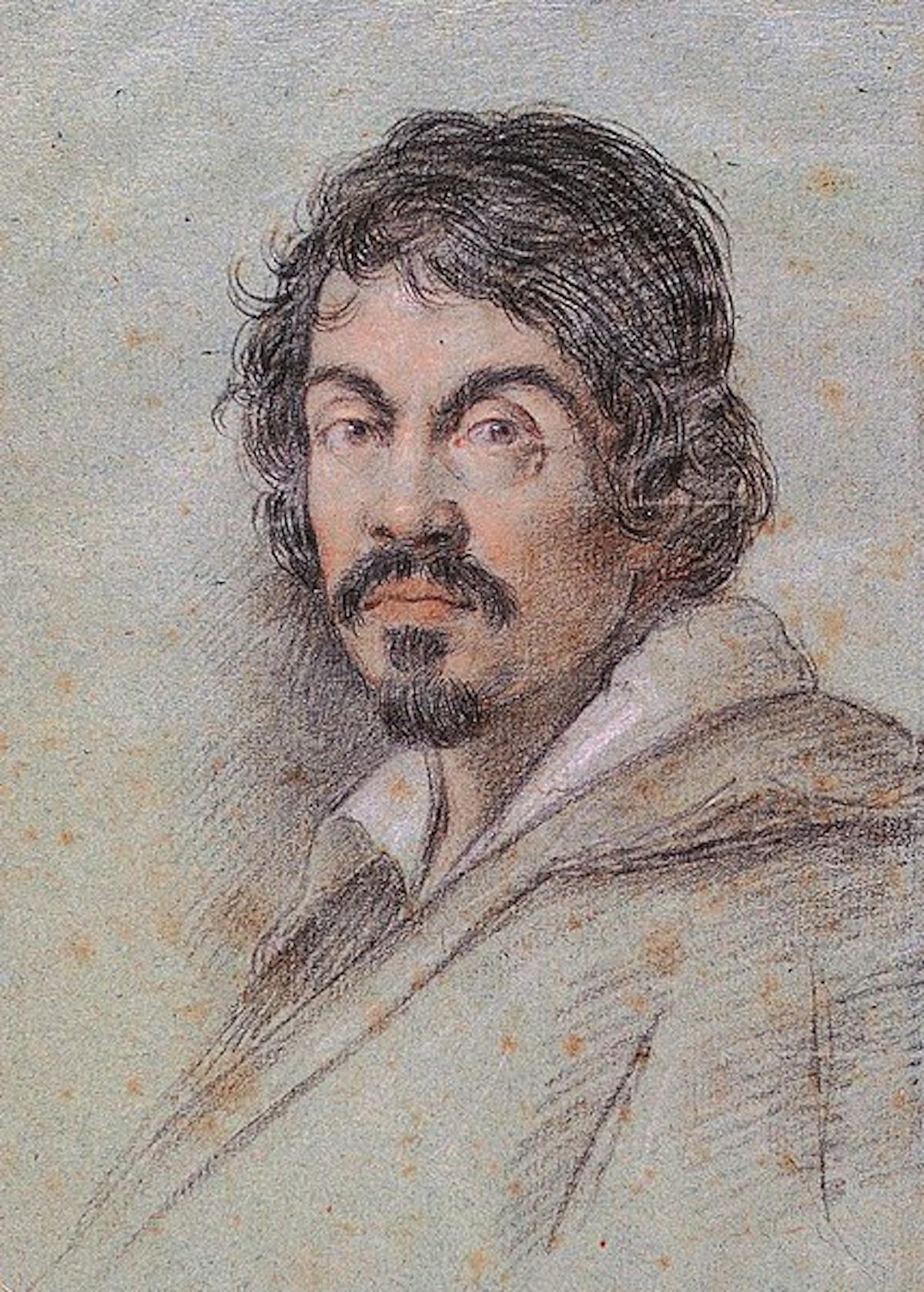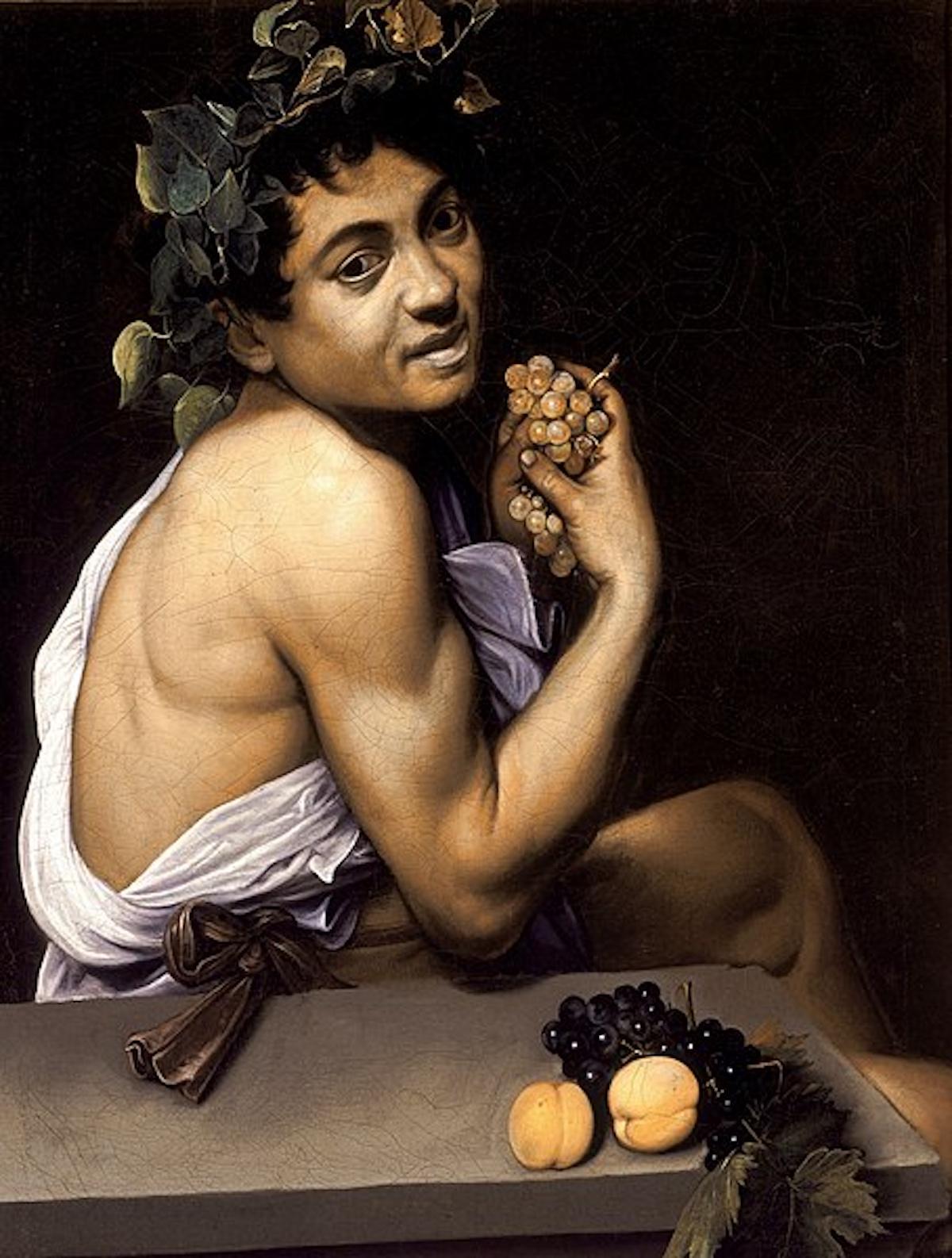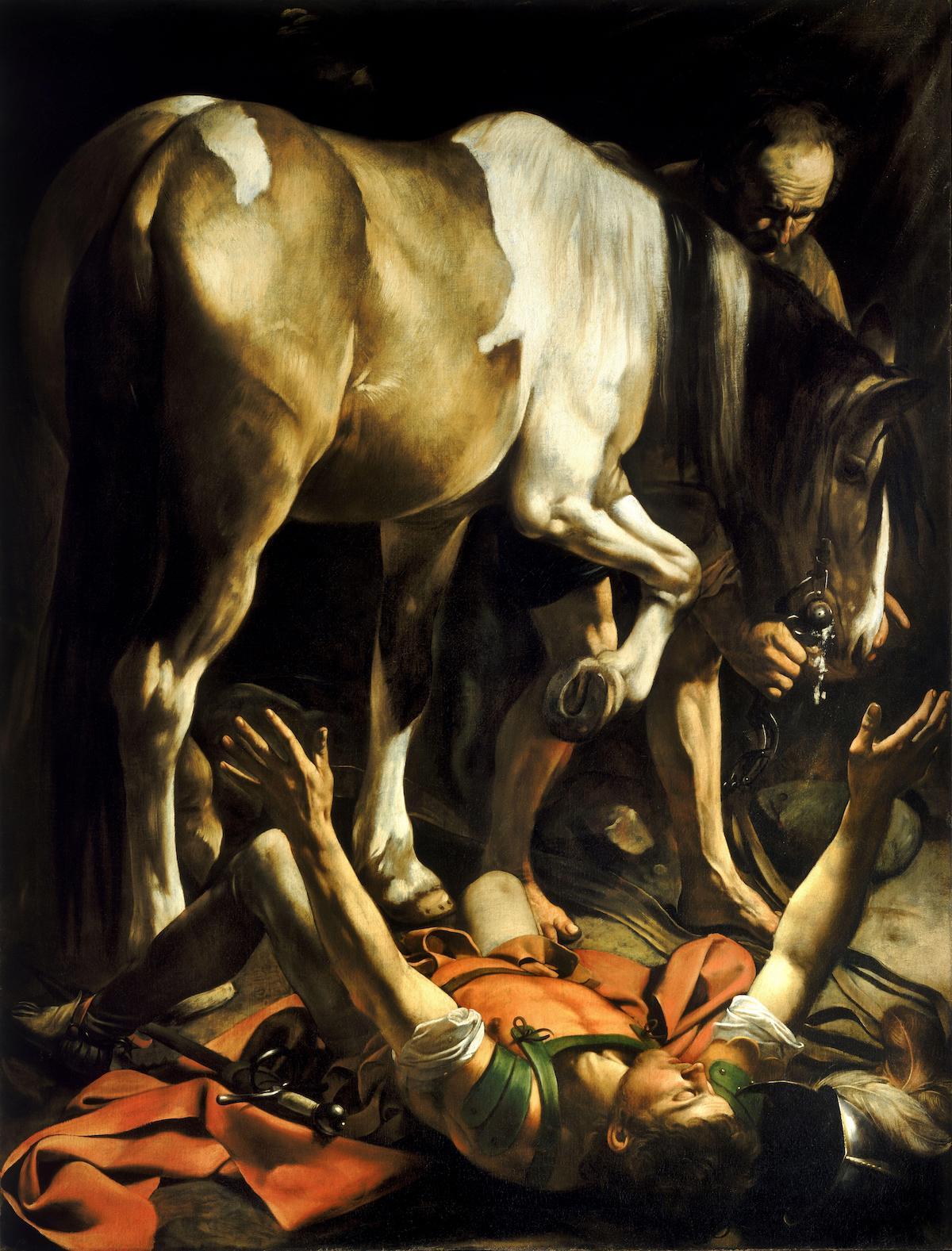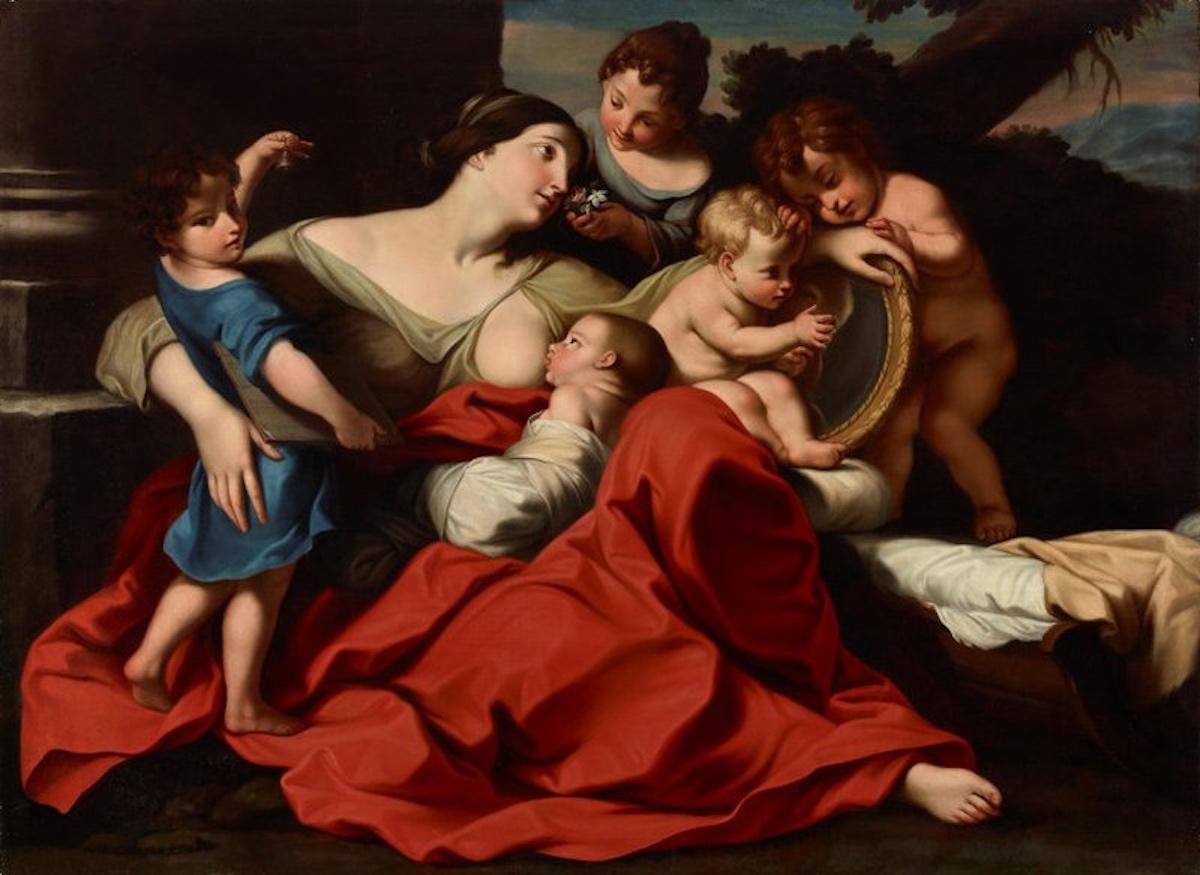His paintings are autobiographical. The early work, Sick Bacchus (1593) is a self-portrait at age 19. The Martyrdom of Saint Matthew (1599), painted when he was 26, shows an older and angrier youth still surrounded by the ragazzi. The boy-turned-man produced what his contemporaries labeled his “dark and dashing manner.” His unbridled rage often took over provoking fisticuffs, sword fights, even the slashing of his own paintings because of a critical remark, and then, committing murder at the height of his powers. Poussin said about Caravaggio’s work, “The ugliness of his paintings will lead him to hell.”
In 1599, when Caravaggio was only 29, Cardinal del Monte used his influence to secure Caravaggio’s first major commission. The decoration of the Contarelli Chapel consisted of three paintings with scenes from St. Matthew’s life. Not only were the paintings controversial in that they didn’t invoke religious feelings but rather violence and horror, but they also catapulted Caravaggio into the Roman art scene, triumphantly. It is astonishing to note that through x-ray analysis, historians have learned that the painter had arrived at the definitive painting not by the usual means, but worked directly onto the canvas without the usual recourse to drawings on paper, and with surprising rapidity.
































